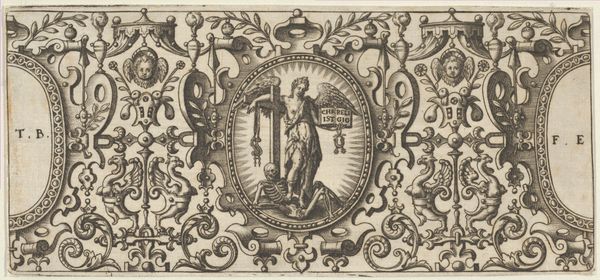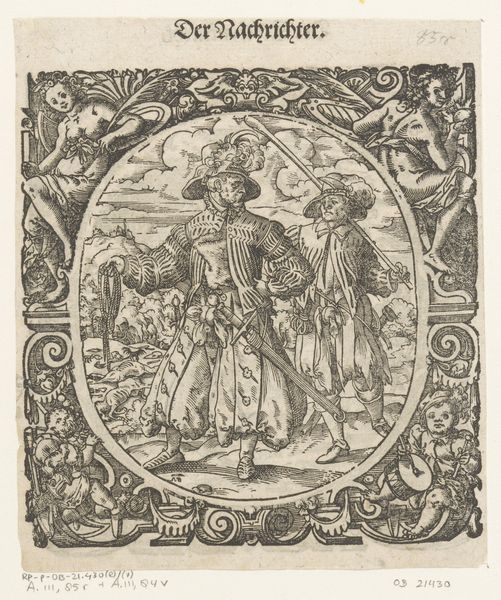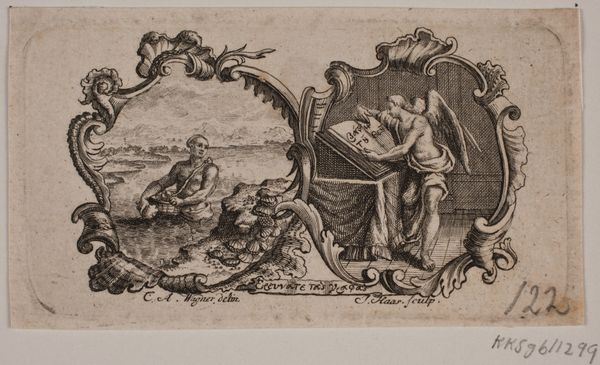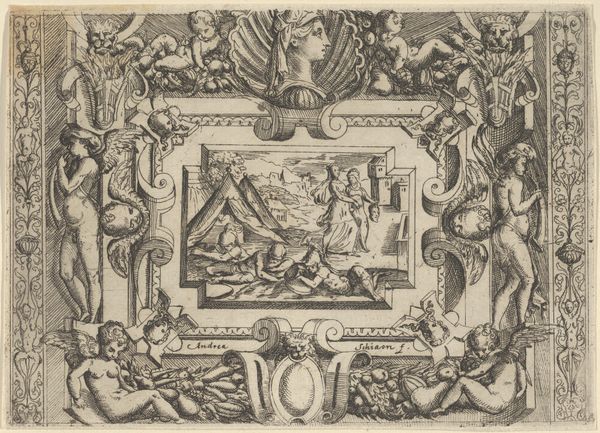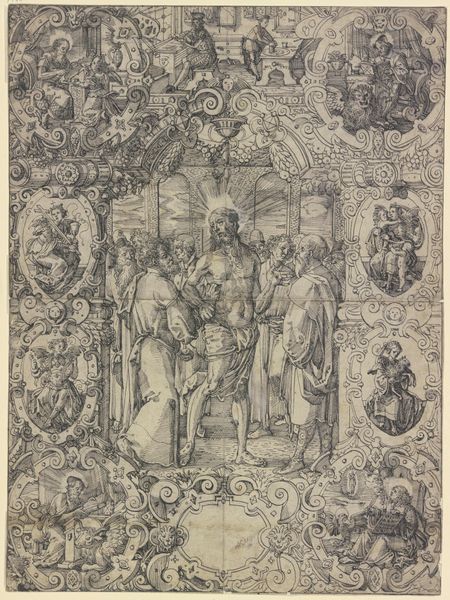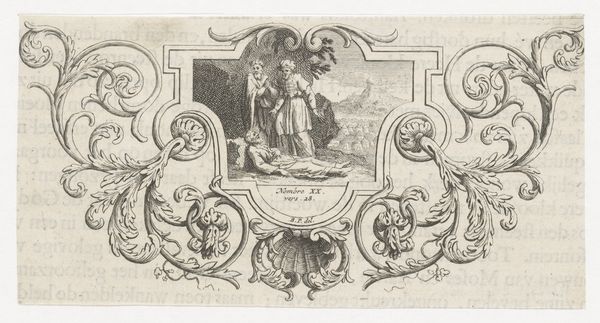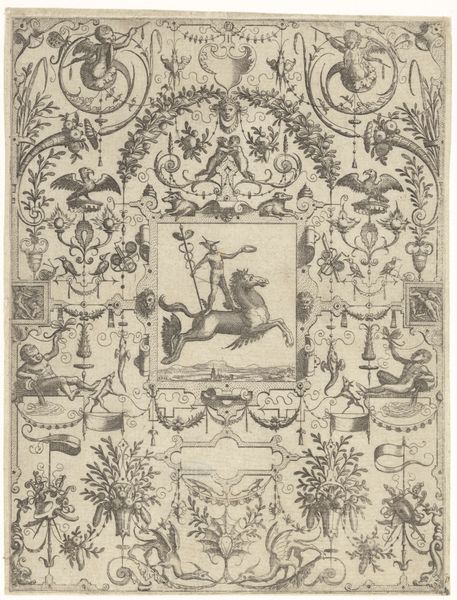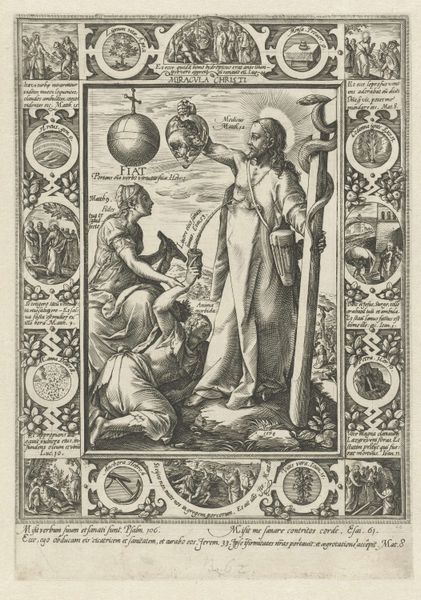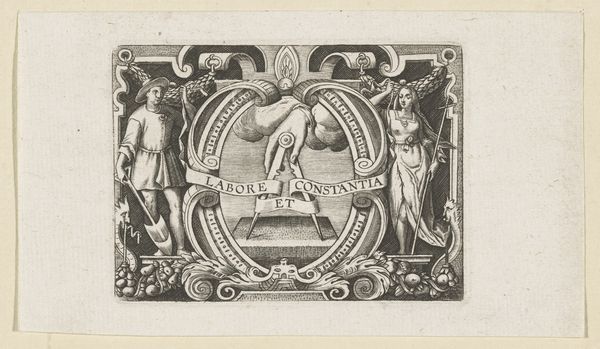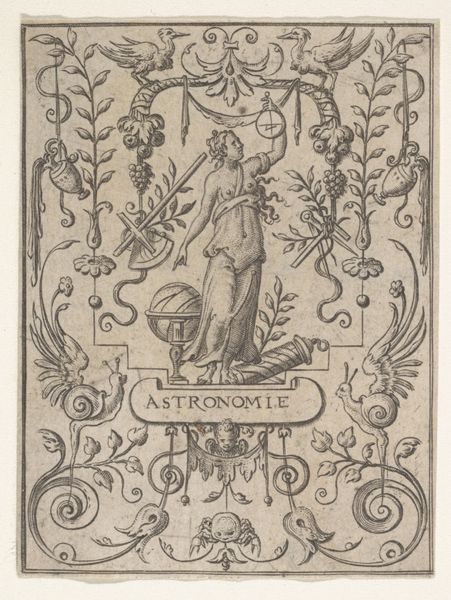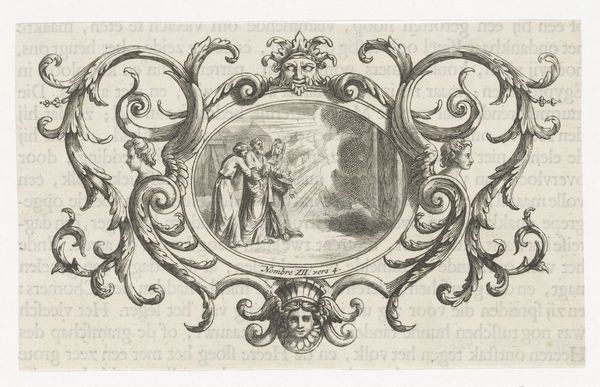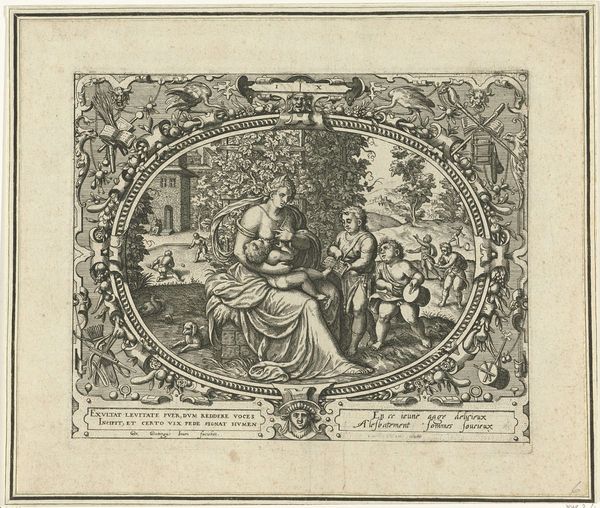
The Good Shepherd, from Grotisch fur alle Kunstler 1580 - 1600
0:00
0:00
drawing, print, engraving
#
drawing
#
pen drawing
# print
#
landscape
#
figuration
#
history-painting
#
northern-renaissance
#
engraving
Dimensions: Sheet: 2 5/8 × 5 3/4 in. (6.7 × 14.6 cm)
Copyright: Public Domain
Curator: Welcome. Let’s observe a small engraving entitled "The Good Shepherd, from Grotisch fur alle Kunstler". Theodor de Bry completed it sometime between 1580 and 1600. Editor: My first impression is how ornamental it is. It's like a shepherd squeezed into the margins of some fantastical, gothic manuscript! There are winged dragons, strange masks... what’s going on? Curator: It's typical of the Northern Renaissance to blend religious subjects with elaborate decorative elements. De Bry was known for his skill as an engraver, creating prints for books, including detailed scenes from the New World. Here, the "Good Shepherd," a representation of Christ, is central but is framed by swirling motifs of mythic and symbolic origins. Editor: Those serpentine dragons look more like pagan guardians than Christian symbols, right? I like how the border almost overpowers the central image; is that intentional? It almost feels irreverent. Curator: Not irreverent, perhaps celebratory! These images are filled with hidden references. Consider the prominent display of "T.B." and "F. et Ex." The Good Shepherd imagery is rooted in pastoral tradition and promises protection. Look closely; the lamb draped across his shoulders echoes sacrificial themes and is placed under an inscription, in Latin, identifying him as "The Good Shepherd." Editor: Okay, so it is an expression of faith, but with these borderline hallucinatory flourishes. It feels of its time, though, navigating that intersection of faith and humanist ornamentation. What's your lasting thought about it? Curator: It makes me think about how cultures adopt symbols and reshape them. The Good Shepherd becomes almost a heraldic emblem, carrying immense symbolic meaning for some, while appearing purely aesthetic or whimsical to others. Editor: For me, it's a reminder that even religious art isn't always about quiet contemplation. Sometimes, it’s gloriously, almost anarchically decorative, shouting its message from a chaotic tapestry.
Comments
No comments
Be the first to comment and join the conversation on the ultimate creative platform.
